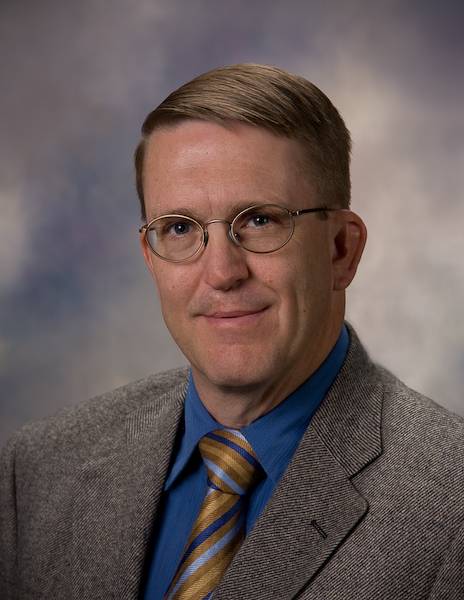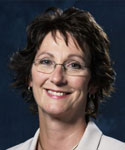
I'm a Packrat
By Bob Mason
No, not like those people you see on TV who haven't thrown anything out in their lifetimes. But I do keep too much.
A couple of days ago two things happened almost simultaneously. First, I could not stuff any more paper in my file drawers. Then my computer informed me that it was full and, until I did something to relieve its congestion, it would no longer accept anything further from me. So I've now had to take time from other projects to clean out both my paper and electronic files.
The advent of ever smaller computers with ever larger storage has lulled me into a sense of complacency. After all, we can store so much more electronically than we can with paper, right? Yes but…
I'm kind of old fashioned. I still keep a lot of paper around. It's often easier for me to work with multiple pages and I still like hand writing notes. But I like the computer too. It seemed like it would never get full so I just keep cramming stuff in there. I still have several drafts of my graduate research project from ages ago. My hard drive is the final resting place for no less than seven final drafts of my last book. The computer itself doesn't help. I just discovered that about a gazillion bits of memory had been taken up with videos that the computer was helpfully storing away without my input in a folder I didn't even know existed.
So for the last two days I've been sorting paper and erasing bits of data. I should have been writing this newsletter and working on some other projects. In sorting through a couple of years of email I've discovered several issues I should have followed up on already. All-in-all, pretty poor time management.
So, here's what I'm going to do.
First, I'll schedule a day every six months to purge files, both paper and electronic. Actually, if I stay up with this, it should not even take a day.
Second, I'll be more diligent about using a "follow-up" file so important things don't get lost. This will be especially helpful with email where it's so easy for something important to fade away.
A very important lesson for leaders at all levels is effective time management. We all get the same 1440 minutes every day. Depending on your job and position you may or may not have control of the majority of those minutes. If you look at your life honestly, you'll probably find that you don't really control nearly as much of that time as you thought. So, the secret is to effectively manage whatever you do control. For instance, if I have a few minutes available, it might be enough time to catch up with a contact or read an article. But if I have to search for them, that time is wasted. Staying organized is a good way for leaders to be more effective.
We'll see how this works six months from now. I'm sure this article will still be on my hard drive.
|
 Five Ways to Thank Your Employees
Five Ways to Thank Your Employees
Five Ways to Thank Your Employees
By Kris Baird
This month of Thanksgiving is a time when many of us reflect on our many blessings. One thing that often isn't top-of-mind on our list of things to be thankful for, though, is our employees. And that's unfortunate. In fact, we should be giving thanks to our employees all year round, not just during Thanksgiving, and, certainly, not just during their annual review. The irony of it is that, as employees ourselves, we know how good it feels to receive a heartfelt and sincere "thank you" from our superiors (or even from our colleagues, employees, or patients). Yet we often fail to take the time to provide the same heartfelt thanks to our own staff. That's a missed opportunity. Letting employees know how much you appreciate their efforts and how those efforts help to contribute to the success of your organization isn't just "nice to do"-it can make a measurable difference in their levels of loyalty. And, ultimately, it can make a difference in the level of satisfaction of your patients as well. Shockingly, far too few employees receive the recognition they need. In fact, according to Gallup research, fewer than one in three American workers strongly agree that they have received any praise from a supervisor during the past seven days, as measured by Gallup's Q12, a twelve-item survey designed to measure employee engagement. Their research further suggests that variation in response to the Q12 item "In the last seven days, I have received recognition or praise for doing good work" is responsible for a 10 - 20 percent difference in revenue and productivity. And employees who report that they're not adequately recognized at work are three times more likely to say they'll quit in the next year. There is a tendency, especially among the baby-boomer generation, to take the attitude, "no news is good news." In other words: "If I don't tell you you're doing a bad job, assume you're doing a good job." Contrast this with an identified need among the millennial generation-whose parents and teachers have showered them with praise and encouragement virtually every day since they were born-to receive frequent recognition. Without that recognition they, and many of their colleagues from other generations as well, feel diminished and unappreciated. What can you do about it? A number of things. Here are five: 1. Pay attention. The simple act of paying attention to your employees sends a strong message that you care about them. Simply rounding on a regular basis can make a big difference-walking around and observing employees in action and complimenting them on the things you see them doing right. 2. Show appreciation verbally, and do this publicly as well as privately. When we're praised privately we get an ego boost. When we're praised publicly, most of us get an even greater boost. 3. Write it down. Often when I speak in front of groups, I'll ask the people in the room who have ever received a handwritten or even personally typed note from a boss at some point in their careers to raise their hands. I'll then ask them to keep their hands up if they've saved those notes. When I look around the room, I generally see almost every hand still in the air. I know I have a file folder of special cards and notes I've received from people over the years, and I know how much I value those notes. Your employees do too. Taking two minutes to write a note is a gift they hold for years. 4. Be specific. While a simple "thank you" is better than nothing at all, adding something specific to that thank you can be particularly meaningful and motivating to your employees. Consider: "Thank you for leading the noise-control team. You are helping us lead a mission-centered organization," or "Thank you for your teamwork today during our code. Your skills and attitude are a shining example of what we stand for. You make me proud." 5. Make it personal. Effective recognition should be prompt, personal, and specific. It should happen as close as possible to the incident you observed and should be specific, as we've already discussed. In addition, it should be personal. A broad "Thanks to the organization for their efforts" is far less impactful on an individual level than "Thank you for taking the time out of your busy day to help me with the new employee orientation. Your passion for patient care shines through, and is a great example for our new team members. " The Baird Group's model was developed to help organizations drive a service-centered culture change by focusing on five essentials. One of the essentials we stress is recognition. Never underestimate the power of a simple "thank you." But even more powerful is the thank you that ties the action to purpose, mission, vision, and values. Many of us make New Year's resolutions, but how about a Thanksgiving resolution? Make a resolution this month that you will take the time to let your staff know how thankful you are for them-not just this month, not just at their annual performance review, but throughout the year. Recognition is truly the gift that keeps on giving. Thanks for being a loyal reader of our newsletter feature. And remember to watch for this month's Tactical Tune Up, which builds on the tips you've learned here. Happy Thanksgiving from the Baird Group! Baird is the author of "Raising the Bar on Service Excellence, The Health Care Leader's Guide for Putting Passion into Practice," "Customer Service in Health care; A Grassroots Approach to Creating a Culture of Service Excellence," (Jossey Bass and American Hospital Association Publishing - 2000), and "Reclaiming the Passion; Stories That Celebrate the Essence of Nursing" (Golden Lamp Press 2005). Baird is also the creator of Raising the Bar on Service Excellence- Step by Step - a five-part web series designed to help health care leaders to implement the 5 essential competencies for building a service-centered culture. Baird has worked with hundreds of health care clients including hospitals, medical practices and long term care facilities to improve the customer experience.
Article Source: http://EzineArticles.com/?expert=Kris_Baird
http://EzineArticles.com/?Five-Ways-to-Thank-Your-Employees&id=6684900
|
